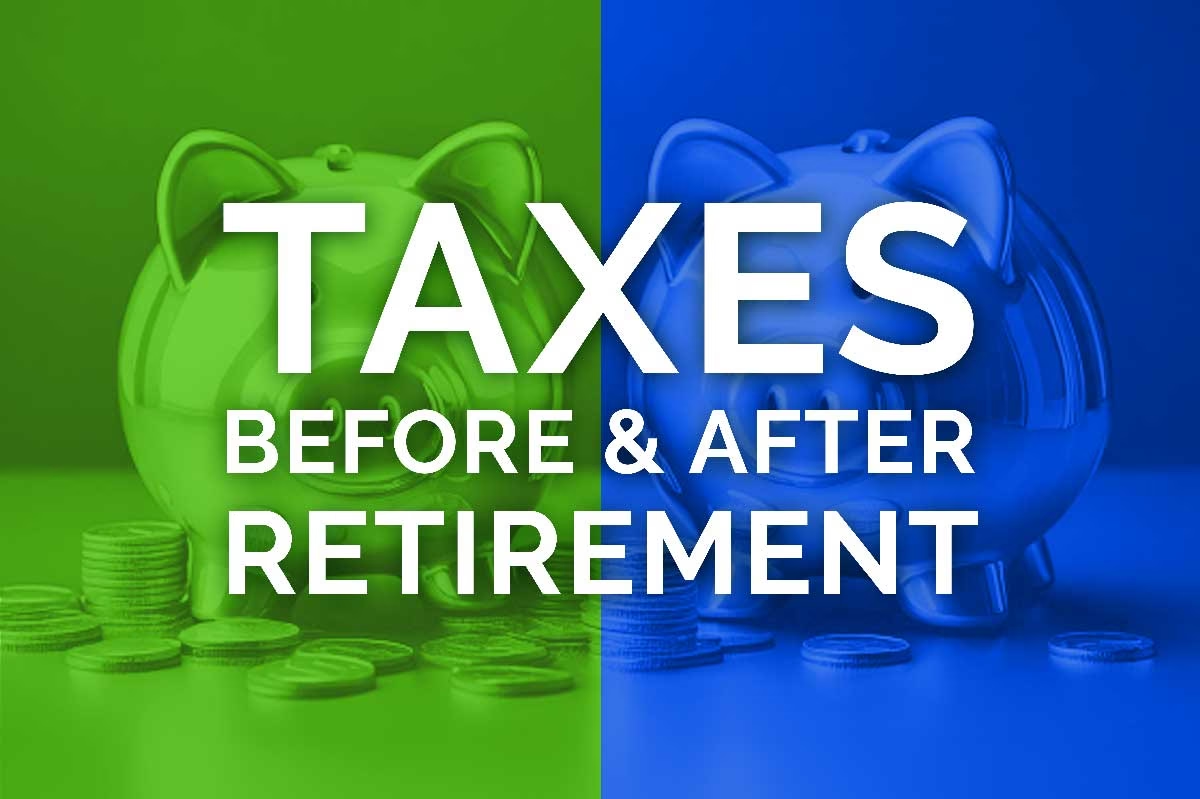You’ve done the hard part—worked, saved, planned. Now retirement is just around the corner. Your 401(k) is healthy, Social Security is coming soon, and maybe you’ve even thought about downsizing or traveling. But there’s one piece people often forget: taxes.
It’s easy to overlook them until your first withdrawal hits and the IRS takes a bite. And that bite? It can be bigger than you expect.
The good news? You have more control than you think. Smart tax planning—before and after retirement—can help you keep more of your money. In this guide, we’ll break it all down in plain language, so you can start making confident, tax-savvy moves today.
Table of Contents
Understanding the Tax Landscape: Pre-Retirement
Tax-Advantaged Retirement Accounts: Your First Line of Defense
If you’re still working, your 401(k), IRA, and HSA are doing double duty. They’re building your retirement—and giving you tax breaks.
Here’s how they work:
-
Traditional 401(k) and IRAs: You contribute pre-tax money, reducing your taxable income now. Later, you’ll pay ordinary income tax on withdrawals.
-
Roth 401(k)s and Roth IRAs: You contribute after-tax money, so there’s no upfront tax benefit—but qualified withdrawals in retirement are completely tax-free. Quick heads-up: for a Roth withdrawal to be qualified, you need to be at least 59½ and the account must have been open for at least five years. Both conditions matter!
If your employer offers a match, take it—free money is hard to beat. Just know that the match always goes into the pre-tax bucket.
And then there’s the HSA (Health Savings Account)—often overlooked but incredibly powerful. If you have a high-deductible health plan, an HSA lets you:
-
Contribute pre-tax dollars
-
Let those funds grow tax-free
-
Withdraw money tax-free for qualified medical expenses
This includes Medicare premiums and, yes, some qualified long-term care services—as defined by the IRS. But not alllong-term care is covered, so it’s worth checking the rules or talking to a tax pro.
Strategic Contribution Decisions
Traditional vs. Roth—how do you choose?
It depends on your tax bracket now and what you expect in retirement:
-
High income today? Traditional might lower your tax bill now.
-
Lower income today, or you expect higher taxes later? Roth could save you more long-term.
Also: if you’re 50 or older, take advantage of catch-up contributions. It’s extra room to stash cash in both 401(k)s and IRAs.
And don’t underestimate the power of steady saving. Even if you’re not maxing out, consistency + time = serious growth.
Tax-Efficient Investing in Taxable Accounts
Not all your money lives in retirement accounts—and that’s fine. But the way you invest in taxable accounts matters.
Here’s what to keep in mind:
-
Long-term capital gains (from assets held more than a year) are taxed at lower rates than short-term gains (sold within a year).
-
Use tax-loss harvesting to offset gains with losses. Just watch out for the wash-sale rule—you can’t repurchase the same or substantially identical security within 30 days before or after the sale if you want to claim the loss.
-
Think about asset location: keep tax-efficient investments like index funds in taxable accounts and put bonds or REITs (which throw off more income) in tax-deferred or tax-free accounts.
Minimizing Taxes on Investment Income
Income from investments can trip people up at tax time. A few quick distinctions:
-
Qualified dividends = taxed at the more favorable capital gains rate.
-
Ordinary dividends = taxed as regular income.
-
Interest from U.S. Treasury bonds is typically exempt from state tax—but double-check with your state, as a few have exceptions.
The more you understand these nuances, the more you can fine-tune your tax planning.
Navigating the Tax Landscape: Post-Retirement
Where Your Money Comes From—and What the IRS Wants
Once you retire, your income stream changes—but taxes don’t go away.
Here’s how different sources are taxed:
-
Social Security: Depending on your total income (including half your Social Security), up to 85% of your benefits could be taxable.
-
Traditional 401(k)/IRA withdrawals: Taxed as ordinary income.
-
Roth 401(k)/IRA withdrawals: Tax-free—but only if they’re qualified (again, after age 59½ and five years in the account).
-
Pensions and annuities: Generally taxed as regular income.
-
Taxable investment accounts: You’ll owe capital gains tax on asset sales, and income tax on interest and some dividends.
Smart Withdrawal Strategies Can Save You Thousands
This is where things get interesting—and where strategy really pays off.
You don’t want to just withdraw money at random. Instead, aim to manage your tax bracket each year. For example:
-
Use room in the 12% or 22% bracket to take IRA withdrawals early on—before RMDs (Required Minimum Distributions) kick in at age 73.
-
Delay Social Security to reduce taxable income early and increase benefits later.
-
Tap taxable accounts first, then traditional IRAs, then Roth—though this depends on your specific situation.
And if you’re considering a Roth conversion (moving money from a Traditional IRA to a Roth), remember:
-
It creates taxable income in the year of the conversion.
-
But it can reduce future RMDs and create tax-free income later.
-
Spreading conversions over several low-income years may help reduce the bite.
What If the Tax Laws Change?
Spoiler: they probably will.
Congress has a long history of tweaking tax brackets, changing deductions, and updating retirement account rules. That’s why tax flexibility is so important.
To stay ready:
-
Diversify your accounts—have a mix of taxable, tax-deferred, and tax-free options.
-
Stay informed. Follow reputable financial news sources or check in with your financial advisor.
-
Don’t put all your eggs in one tax basket.
Estate Planning: Leave a Legacy, Not a Tax Headache
Taxes don’t stop when you do—which is why estate planning matters.
-
Traditional IRAs pass on with a tax burden. Beneficiaries must pay ordinary income tax on withdrawals.
-
Roth IRAs pass on tax-free—but under the SECURE Act, most non-spouse beneficiaries must withdraw all funds within 10 years.
-
There are exceptions for minor children, disabled individuals, and certain others—but most folks fall under the 10-year rule.
-
Keep your beneficiaries updated, and talk to an estate planner if your situation’s complex.
Actionable Tips You Can Use Right Now (and Later)
Whether you’re ten years from retirement or already living it up, these tips can help:
-
Work with a financial planner: Seriously, the tax code is complicated—especially when you’re juggling multiple income streams.
-
Review your plan every year: Life changes. So do tax laws.
-
Consider Roth conversions carefully: Great tool, but don’t get blindsided by the tax bill.
-
Use Qualified Charitable Distributions (QCDs): After age 70½, you can donate directly from your IRA, reduce your taxable income, and support causes you care about.
-
Stay educated: You don’t need to become a tax expert, but being aware of key concepts can keep you ahead of the game.
Quick List: Retirement Tax Moves to Keep More of Your Money
-
Start tax planning before you retire
-
Use HSAs strategically
-
Understand how your income is taxed
-
Balance withdrawals across accounts
-
Watch for Roth five-year rules and age requirements
-
Keep an eye on RMD deadlines
-
Use QCDs for tax-smart giving
-
Diversify your tax exposure
In Conclusion: You’ve Got This
Retirement should be about freedom—not financial surprises.
Taxes might seem like a pain, but with some planning, they’re manageable. Start thinking about tax strategy now. Keep your options flexible. Work with a good advisor. And check in regularly.
The more intentional you are with your money, the more you’ll enjoy your retirement—and keep what you’ve worked so hard to build.


